Do Turtles Have Nerves in Their Shells?
Turtles are reptiles that are known for their hard shells. And there are a lot of myths and curiosity about the turtle shell. One of the most common questions people often ask is- do turtles have nerves in their shells?
Turtles do have nerves in their shells, but they are not the same type of nerves that humans have or other parts of their bodies. The nerves in a turtle’s shell are more like pressure sensors. They help the turtle to know if something is touching its shell. However, these nerves are not as sensitive as ours. Therefore, a turtle probably doesn’t feel pain if its carapace gets hit slightly.
The shell is also connected to the turtle’s spine. And a lot more interesting facts regarding turtle shells are yet to know. This blog covered a few of them. Hence, you’re in the right place if you’re seeking this type of information.
Related Blog:
What Is a Turtle Shell Made of?
A turtle shell comprises two parts: the carapace and the plastron. The turtle’s upper shell is the carapace, and the plastron is the lower shell. Both the carapace and plastron are made of bony plates covered by a thin layer of keratin.
The shell has two layers of keratin, which is the same material that makes up human fingernails and hair. The shell’s outer layer is called the epithelium, and the inner layer is called the dermis. The dermis is where the shell’s blood vessels and nerves are located.
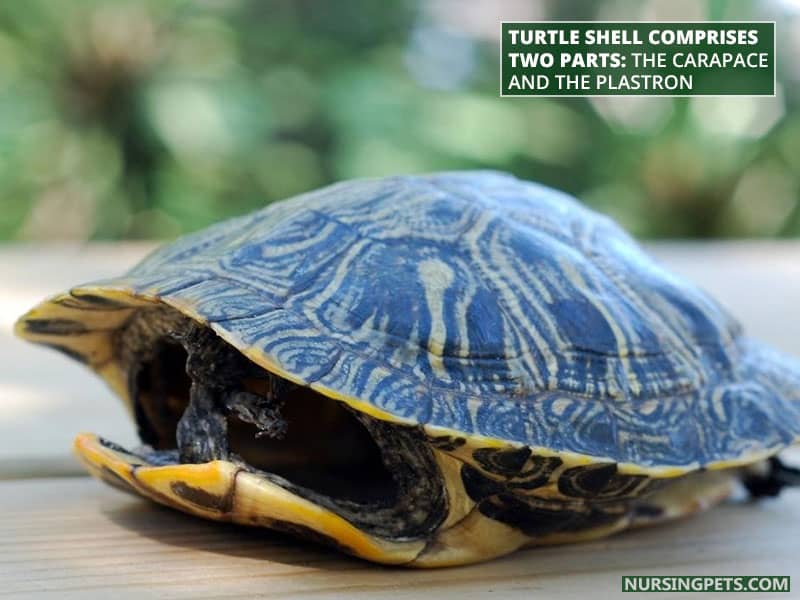
And the bony plates are joined together by ligaments, and the whole shell is held together by muscle. The carapace is made up of about 50 plates, and the plastron is made up of about 30.
Moreover, the plates are arranged in a series of concentric rings. The number of rings varies depending on the species of turtle.
The shell protects the turtle’s internal organs and helps the turtle to float. It also acts as a storage area for calcium. Turtle shells come in a variety of colors, and the patterns on them can be used to help identify the species of turtle.
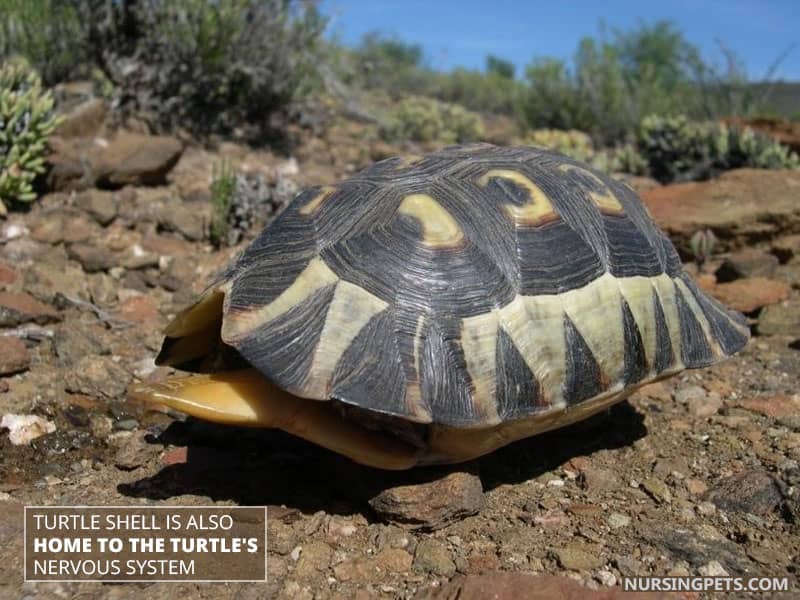
Additionally, the shell is also home to the turtle’s nervous system. The carapace is lined with nerve endings that are connected to the turtle’s brain. These nerves allow the turtle to feel touch and pressure.
The plastron also has nerve endings, but these are not as well developed as those on the carapace. Turtles can feel pain if their shells are hit or damaged. However, they do not have the same level of sensation as humans.
How Sensitive Is Turtle Shell?
The turtle shell is quite sensitive and can be easily damaged. It is a natural armor that protects these creatures from predators and other dangers. The shell is made up of bony plates that are covered by a layer of tough, protective skin.
That combination makes the shell strong and durable, but it also makes it sensitive to touch. Turtles can feel pressure and pain through their carapace, and they’ll often withdraw into it when they’re touched.
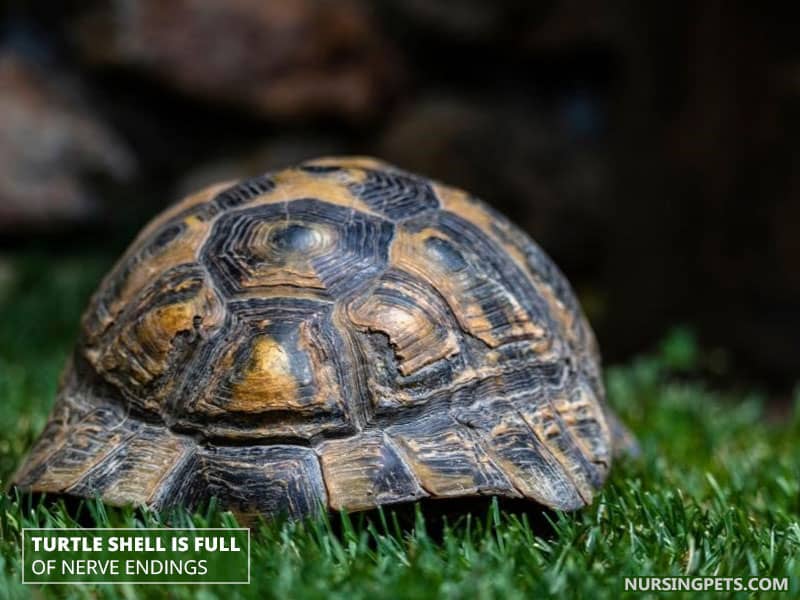
The shell is full of nerve endings that send information to the turtle’s brain. The brain then interprets this information as pain or discomfort.
While it is quite tough, it is not invincible. Predators can still break through the shell if they apply enough force. Hence, the shell does provide some protection, but it is not foolproof.
Overall, the turtle shell is a sensitive and strong piece of armor. It protects the turtle from predators and other dangers, but it is not invincible. The carapace is full of nerve endings that allow the turtle to feel pain or discomfort when it is touched.
Do Turtles Feel Their Shell?
Some experts believe that turtles can feel pressure and pain in their shells because they have nerves in there. These nerves are responsible for sending signals to the turtle’s brain, which then interprets these signals as pain or pressure.
However, other experts believe that turtles cannot feel pain or pressure in their shells because they do not have the same type of nerves that humans and other animals have.

So, why are there two different thoughts? Scientists who believe that turtles do feel their shells argue that turtles have a lot of nerve endings in that, and when turtles are touched on there, they often move their legs or head in response.
However, the other experts argue that turtles have a thick layer of skin on their shells. That skin is so thick that it would be difficult for turtles to feel anything through it. Also, turtles face a hard time moving its shell. But, if they could feel it, it wouldn’t be the case.
Do Turtles Feel Pain in Their Shell/Does A Turtle Feel Pain If Its Shell Gets Hit?
It’s a common misconception that turtles don’t feel pain in their shell. However, this isn’t the case. While it’s true that the carapace is made up of thick, bony plates, there are still nerves running through it.
Moreover, you may have noticed. When a turtle’s shell is injured, the turtle will often try to hide the injury from predators. This behavior is known as injury feigning and is often seen in animals that are trying to avoid being hurt.
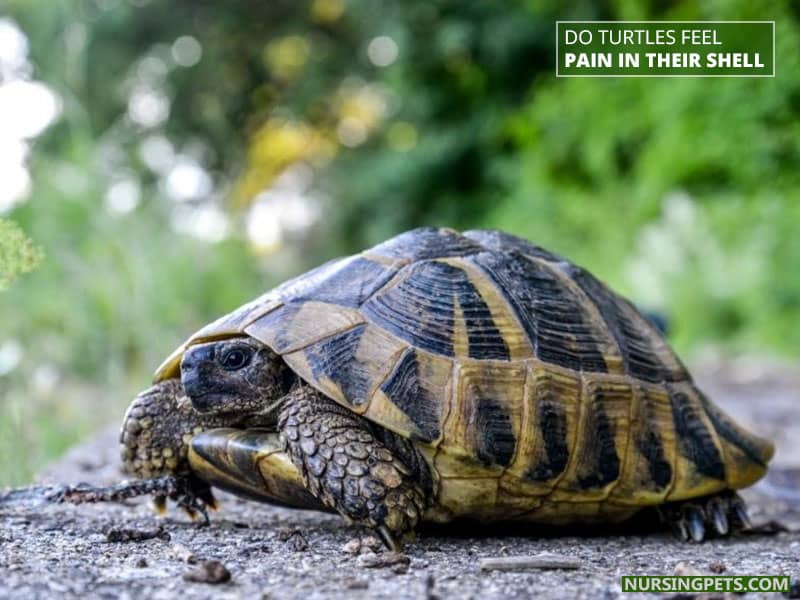
In addition, turtles have nociceptors, which are sensitive to pain receptors. This suggests that they may be able to feel pain, although we cannot know for sure.
So, does a turtle feel pain if its shell gets hit? Yes, if a turtle is hit or otherwise injured, it will feel pain just like any other animal.
Do Turtles Like Their Shell Rubbed or Scabbed?
There are conflicting opinions on whether turtles like having their shell rubbed or not, as different turtles seem to have different preferences. Some turtles appear to enjoy having their shell rubbed, while others prefer having their scabbed.
However, most turtles generally seem to enjoy having their shell rubbed or scratched, especially if it feels good. It is likely because it helps them to feel relaxed and secure. Additionally, it can also help to remove any dirt or debris that may be stuck to their shell.
Can Turtles Feel You Scratching Their Shell?
It turns out they can! Turtles have a lot of nerve endings in their shell. So they can feel things like pressure and touch. When you scratch their shell, they feel it just like we would feel if someone scratched our back. It feels good!
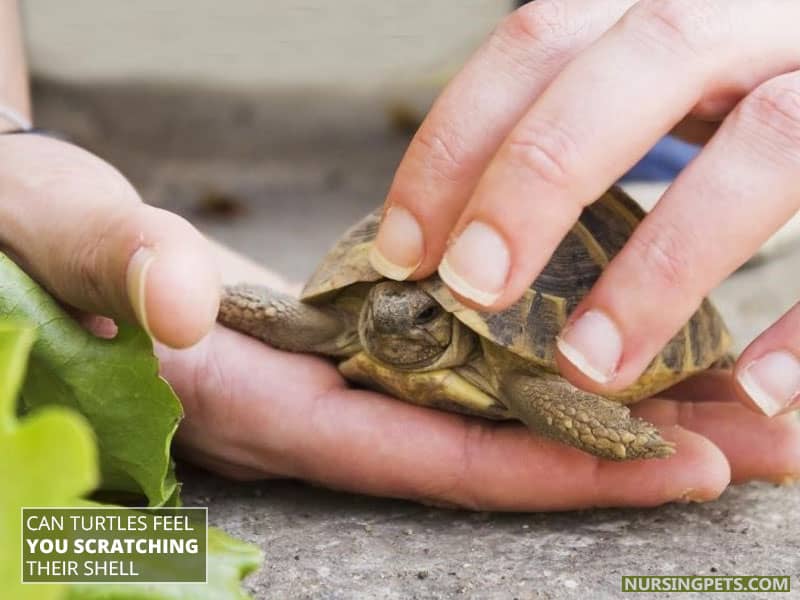
Turtles also have a sense of smell, so they can smell the person who is scratching their sh. This helps them know whether the person is a friend or a foe.
Can Sea Turtles Feel It When You Touch Their Shell?
Although sea turtles can feel pressure on their shells, they do not have the same nerves as humans. It means that they can’t feel pain the same way we do. However, this doesn’t mean that they don’t feel anything at all.
Moreover, sea turtles have a lot of pressure receptors in their skin. This helps them to know when they are being touched. They also have a special type of scale on their skin called scutes.
Therefore, when you touch a sea turtle’s shell, you are actually touching their scutes. It can feel like you are touching a hard surface. The turtle may not feel pain, but they can still feel pressure.
Why Turtle Dance When Touched on Their Shell?
There are a few possible explanations for this behavior. One reason could be that they are trying to escape. When a turtle feels something touch its shell, it may instinctively try to move away from the source of the touch.
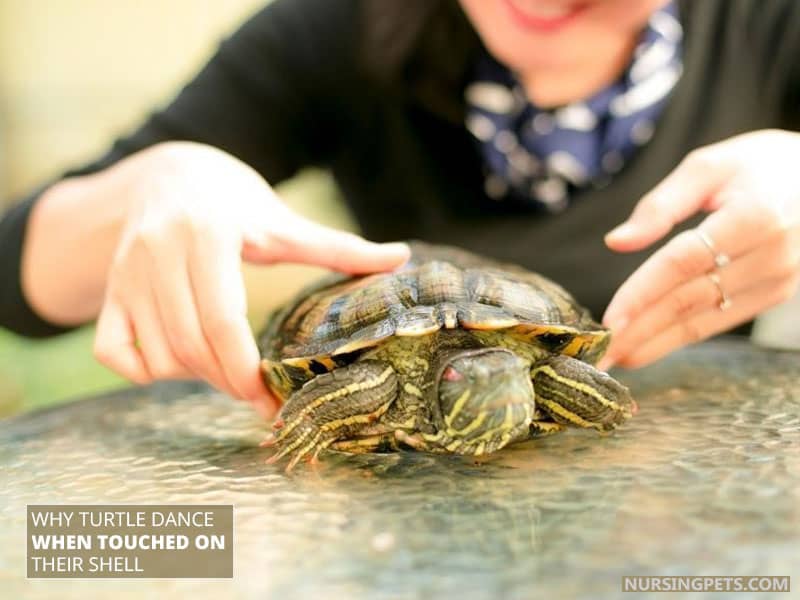
This can cause the turtle to start moving its legs and body in a jerky, uncoordinated way, which might look like dancing.
Another reason why turtles might dance when touched on their shell is that they are trying to mate. Some turtles will engage in a mating dance when they feel a potential mate touching their back.
This dance is usually much more coordinated than an escape dance and may involve the turtle moving its head and tail in a specific pattern.

Whatever the reason, it is usually best to leave turtles alone if you see them dancing. If you are trying to catch a turtle, it is best to wait until it stops dancing before attempting to grab it.
People Also Asked:
01. Can Turtles Feel Their Shell Being Pet/Pat?
According to herpetologists, it is a resounding yes! Turtles have sensitive skin, and their shells are covered in nerve endings. This means that when you pet a turtle’s shell, they can feel it just as if you were patting their back.
In fact, some turtles even enjoy being petted and will start to move their head and legs to indicate they’re enjoying the attention.
02. Can Box Turtles Feel Their Shell?
One common question that owners have is whether or not box turtles can feel their shells. The answer is yes! Box turtles have receptors all over their body, including their carapace. Therefore, they can perceive the pressure, touch, and temperature just like we can.
03. Why Do Turtles Have Patterns on Their Shells?
There are two main reasons why turtles have patterns on their shells. The first reason is camouflage, the patterns on a turtle’s shell help to camouflage the turtle from predators.

And the second reason is to attract mates. The patterns on a turtle’s shell can help to make the turtle more attractive to the opposite sex.
Moreover, the patterns on a turtle’s shell can be helpful for scientists in identifying different turtle species. It can also be used to tell male and female turtles apart. Male turtles usually have brighter colors and patterns on their shells than female turtles.
Final Words
According to today’s blog, do turtles have nerves in their shell? Although turtles are reptiles and have a tough exterior, they’re actually quite sensitive creatures. They have nerves running through their shells, allowing them to feel touch and pressure.
So, there you have your answer. If you like our blog and writing, don’t hesitate to leave a comment to let us know. We really appreciate your response. Also, you can ask any question or request a topic to cover in our blog.
Image Source: Canva.com/photos


Hi, I have a spur-thigh tortoise and this spring he emerged from hibernation with what appears to be white splodges on the edges of his shell at the back and side – I assumed it was paint or whitewash, which he may have rubbed against while hibernating against a wall and tried to rub them off but they appear to be part of the shell- perhaps a growth or fungus. Any suggestions as to what it could be and what I should do about them. I got the tortoise 25 years ago but the breeder had no idea how old he was then as they’d bought him from another.
Thanks.
Hi there Katie Campbell,
Without seeing it, it is hard to tell what exactly it is. Usually, white spots on a tortoise’s shell can be caused by mineral deposits, shell rot, or shedding of the skin and scutes. So, checking with a veterenian would be the best option. And avoid attempting to remove the splodges yourself, as you are not sure what it is. In the meantime, ensure the tortoise’s enclosure is clean and provides appropriate temperature and humidity levels.
Also, you can check this article on the similar matter: Turtle Shell Turning White Hope this will help.